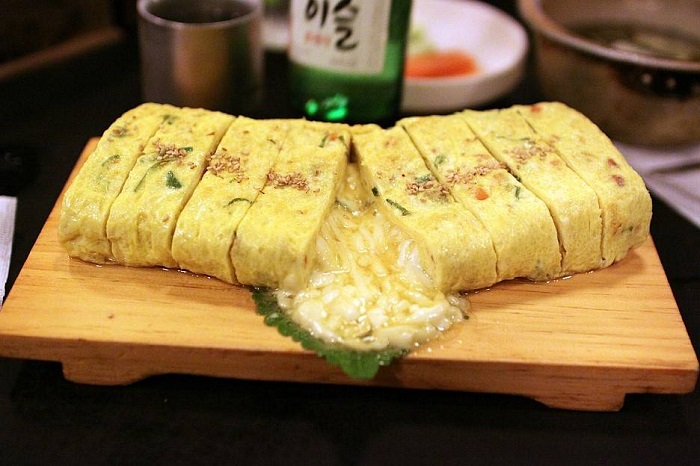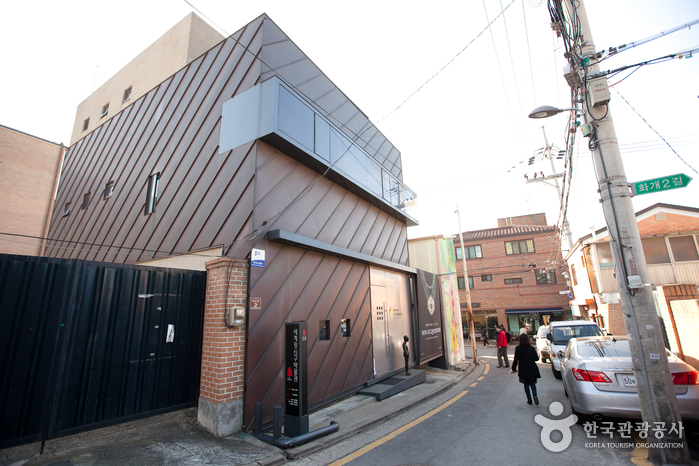Toxnfill Clinic - Hongdae Shinchon Branch [Tax Refund Shop] (톡스앤필의원 홍대신촌점)
6.9Km 2024-06-26
141, Yanghwa-ro, Mapo-gu, Seoul
-
Kleam Clinic (클림의원)
6.9Km 2025-10-23
3F, 141 Yanghwa-ro, Mapo-gu, Seoul
Kleam Clinic is a leader in K-beauty innovation, and they discover the unique, radiant beauty of customers from around the globe.
Kleam Clinic is sought after by many customers as it is known for its excellent procedural competence, honest pricing, and use of genuine products. Additionally, the clinic provides interpretation services in English, Chinese, Japanese, and Thai for international clients. Additionally, the clinic offers airport pick-up and drop-off services, hotel bookings, and tax-free services, allowing foreign visitors a hassle-free one-stop procedure.
The clinic is open from Monday through Sunday so patients can conveniently get consultations on holidays as well.
EW Folder - Hongdae Branch [Tax Refund Shop] (EW 폴더 홍대)
6.9Km 2024-04-22
152-6, Yanghwa-ro, Mapo-gu, Seoul
-
Myth Jokbal Hongik Univ. (미쓰족발 홍대)
6.9Km 2024-03-19
123-1 Eoulmadang-ro Mapo-gu Seoul
+82-2-336-2111
Myth Jokbal is an affordable place for jokbal (braised pigs' feet) and bossam (kimchi cabbage wraps with pork). Jokbal is made by boiling pork feet for a long time and is characterized by its chewy texture and flavor. The signature dish, Myth maneul jokbal (braised pigs' feet with garlic), is tender and flavored with plenty of garlic. the restaurant offers other popular dishes including original jokbal (original braised pigs' feet), kkaennip buljokbal (spicy braised pigs' feet with perilla leaves), and gabeuri bossam (kimchi cabbage wraps with grilled blade-end fatback). It is just a 2-minute walk from Exit 9 of Hongik Univ. Station, attracting numerous visitors.
Cheongdamdong Pojangmacha (청담동포장마차)
6.9Km 2024-03-07
25, Yonsei-ro 4-gil, Seodaemun-gu, Seoul
+82-2-363-4377
Cheongdamdong Pojangmacha hearkens to the idea of a pojangmacha, street food carts that often offer snacks and alcoholic beverages. During the daytime, Cheongdamdong Pojangmacha offers meals like chueogui dosirak (mon’s lunch box). In the evening, the restaurant’s snack menu with nearly 50 dishes is opened to the visitors. One can, for instance, find dak bokkeumtang (spicy braised chicken), cheese gyeran mari (rolled omelet with cheese), tteokbokki, manduguk (mandu soup), odolppyeo (pork belly cartilage), yukhoe (beef tartare) at affordable prices.
LEESEL Hanbok (리슬한복)
6.9Km 2025-11-05
136-11, Eoulmadang-ro, Mapo-gu, Seoul
Hanbok, the beauty of Korea
It is a Hanbok brand that produced BTS Jimin's stage costumes and CHUNG HA's Hanbok worn in the 2022 season's greeting pictorial. The ‘Sochangui Maxi Coat’ worn by SHINee's TAEMIN received an explosive response and became more known. LEESEL x SPAO's collaboration pajamas gained great popularity not only among celebrities but also among the general public. In 2022, Hanbok debuted at Milan Fashion Week for the first time. The head office is located in Jeonju.
Gwanghwamun Gate (광화문)
6.9Km 2024-12-04
161 Sajik-ro, Jongno-gu, Seoul
+82-2-3700-3900
Built in 1395 under the reign of King Taejo, the first king of the Joseon dynasty, Gwanghwamun Gate is the southern gate of Gyeongbokgung Palace. It is also the main gate of the palace, therefore larger and fancier in comparison to the other gates. Gwanghwamun Gate consists of three arched gates; the center gate was used by the king, while the other two were used by the crown prince and royal officials. The tall granite walls of the gate serve as a platform for the wooden gate tower that watches over the city. The gate has a sign with its name written at the top center of the gate tower.
Gwanghwamun Gate went through several damages and restorations over the course of history. It was first severely damaged during the Imjin War (1592-1598) and was not restored until the reconstruction of Gyeongbokgung Palace in 1864. Under the Japanese administration, the gate was demolished and relocated to the north of the palace's eastern gate, followed by series of damages during the Korean War (1950-1953). In 1968, Gwanghwamun Gate was relocated back to the south of the palace and was rebuilt using concrete; however, the gate’s position was shifted a few meters away from its original location. In 2006, a major reconstruction project took place to restore Gwanghwamun Gate to its original state and location, disassembling the structure completely and replacing concrete with granite and wood. After three years and eight months of construction, Gwanghwamun Gate was fully restored to its original form and was open to the public on August 15, 2010.
World Jewellery Museum (세계장신구박물관)
6.9Km 2023-09-21
2, Bukchon-ro 5na-gil, Jongno-gu, Seoul
+82-2-730-1610
Situated in the gallery district in the back alley of Samcheong-dong (east of Gyeongbokgung Palace), the World Jewellery Museum houses 3,000 jewelry pieces from 60 countries, which have been collected over 30 years. Of which, 1,000 have been selected for display. The first floor contains an Amber Wall that goes back as far as 50 million years, the Golden Hall (El Dorado), the Necklace Hall, and the solemn Alter of the Cross. The second floor holds a mask wall, rings, beads and ivory as well as modern jewelry.
ABC-Mart - Sinchon Branch [Tax Refund Shop] (ABC마트 GS신촌점)
6.9Km 2024-04-22
6, Myeongmul-gil, Seodaemun-gu, Seoul
-
Ewha Womans University (이화여자대학교)
6.9Km 2023-07-04
52, Ewhayeodae-gil, Seodaemun-gu, Seoul
+82-2-3277-2114
Ewha Womans University is Korea's first women's university founded in 1886 by American Methodist missionary Mary Scranton. Ewha Womans University is also the most famous women's university in Korea and its name originates from Ehwa Hakdang, a name given by Empress Myeongseong in 1887. Ewha Womans University created a four-year university course in 1910, and in 1943, the name of Ewha was taken away during the Japanese colonial period and downgraded to a one-year school. In October 1945, the year of Korea's independence from Japan, it regained the name of Ewha and was promoted to a university with eight departments. Currently, it consists of 15 graduate schools, 11 colleges, and 67 departments, and there are 8 affiliated research institutes.
The street in front of Ewha Womans University is famous for shopping. This place is full of clothing stores and neat food that boast a popping sensation to suit the tastes of female college students. The shopping street in front of Ewha Womans University is a straight road that lies ahead of Exits 2 and 3 of Seoul Subway Line 2. Alleyways stretch out like branches around this street and are filled with various accessory shops, clothing stores, shoe stores, restaurants, cafes, and beauty salons.
![Toxnfill Clinic - Hongdae Shinchon Branch [Tax Refund Shop] (톡스앤필의원 홍대신촌점)](http://tong.visitkorea.or.kr/cms/resource/33/3313433_image2_1.jpg)

![EW Folder - Hongdae Branch [Tax Refund Shop] (EW 폴더 홍대)](http://tong.visitkorea.or.kr/cms/resource/73/2888173_image2_1.jpg)



![ABC-Mart - Sinchon Branch [Tax Refund Shop] (ABC마트 GS신촌점)](http://tong.visitkorea.or.kr/cms/resource/95/2890495_image2_1.jpg)
 English
English
 한국어
한국어 日本語
日本語 中文(简体)
中文(简体) Deutsch
Deutsch Français
Français Español
Español Русский
Русский